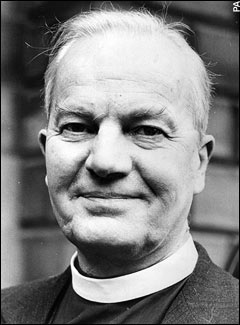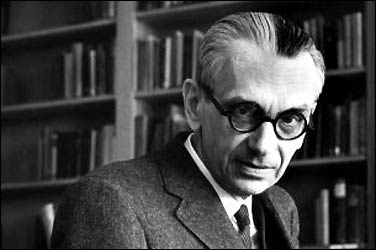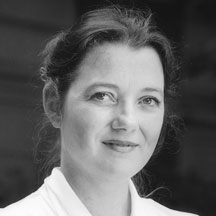 Horsehead nebula
Horsehead nebulaBy Neil Earle
“Cosmic Baby Picture?”
 Horsehead nebula
Horsehead nebulaThat was Time magazine’s gently teasing title for its 2003 report that the satellite Wilkinson Microwave Anisotropy Probe (or WMAP) has beamed back new information on the age of the universe 13.7 billion years. Time passes and that figure now stands at 13.5 billion years.
But WMAP was big in its day. It apparently confirmed that the cosmos underwent a period of turbocharged expansion before it was one second old. What’s the significance of all this? Just that it indirectly confirms the Big Bang theory. “The first stars turned on just 200 million years after the Big Bang,” Princeton University’s David Spergel confirms. Before WMAP’s recent relays, astrophysicist John Bahcall was skeptical of the notions of dark matter, dark energy and black holes. Now, WMAP has made him a believer. “This implausible crazy universe has now been confirmed with exquisite detail,” he says.
WMAP’s findings, coming less than a year after the death of Stephen Jay Gould in May, 2002, gives adherents of science and believers in God some new food for thought. Gould was one of the most respected and prolific American writers, exponents, and reformulators of evolutionary theory. He had dismantled so many of Charles Darwin’s first principles that, by the 1990s it was becoming possible, thought some, to reopen discussion on the long rift between Science and Religion.
For more than two generations it had become quite fashionable to wall off these two major disciplines by what some call the “two-language theory” – scientists ask how, theologians ask why! Yet a growing number in both categories were increasingly unhappy with this neat division. The distinguished German theologian Wolfhart Pannenberg was one of them. He would not let this neat dichotomy stand. Pannenberg, Professor of Systematic Theology at the University of Munich, was adamant that scientists cannot push “God questions” into the corner reserved for students of morality and ethics. “If nature can be appropriately understood without reference to the God of the Bible,” writes Panneneberg, “then that God cannot be the creator of the universe, and consequently he cannot be truly God and be trusted as a source of moral teaching either.”
This is a bold assertion. But Pannenberg pushed on: “If the God of the Bible is the creator of the universe, then it is not possible to understand fully or even appropriately the processes of nature without any references to that God.”
More than a few physicists now line up with Pannenberg’s assertion that the strictly scientific view of nature – still heavily influenced in the popular mind by Newton and Darwin – is incomplete. Recent studies into quantum theory, quarks, and subatomic particles reveal very strange goings-on at the subatomic and molecular level. Nature’s essential elements are not as easy to predict and quantify as once thought. Erwin Schrodinger, a Nobel Prize winning physicist, commented: “The scientific picture of the world around me is very deficient.”
Three factors seem to be drawing at least some theologians and physicists closer together:
First, WMAP’s findings now confirm what both astrophysicists and some religionists have been saying for some time: the universe has a measurable history. We can now put it at 13.5 billion years. This means that the brilliant astronomer Carl Sagan’s 1980 Cosmos text has to be updated – he seemed to teach a universe that has always existed.

What this means is also significant to those who believe in a Creator. The Big Bang cosmology shows that the reality of nature is first and foremost a historical reality – in a way a matchup with earlier works such as Gilgamesh or Genesis and their “in the beginning” scenarios. This matters because for Bible researchers “theology can be understood as the history of God’s activity” – as Walter Breugemann has been arguing from historical books such as Samuel, Kings and Chronicles. Much of healthy theology finds its start in the simple musing on the works of God’s hands (Psalm 143:5). The 5 billion years of earth history can be then viewed not as a tale of pointless deaths and extinctions but as God turning repeatedly to the work of his hands and/or overseeing the vast potentiality for development and change he had packed into his creation. The Scottish theologian Tom Torrance (pictured, left) had argued all across the latter 20th Century that this potency is at least one way to interpret the physical data (Divine and Contingent Order, page 54).
Second, the universe is bearing more and more the marks of having been brought into existence as a habitation to support human life. Physicist Murray Gell-Mann wrote: “It is difficult to imagine that a handful of residents of a small planet circling an insignificant star have as their aim a complete understanding of the entire universe.” Yet such seems to be the case. According to some scientific theologians, the universe seems “biophilic” – a fit vehicle for the emergence of life. The carbon being “cooked” in the star-dust from exploding stars makes up the fundamental ingredient for such “carbon units” as the homo sapiens. Biblical writers and theologians such as Isaiah 40:26 encourage this very project. They insist on linking the heavens with our own natural human reactions of awe and wonder: “Lift up your eyes and look to the heavens: Who created all these? He who brings out the starry host one by one, and calls them each by name>. Because of his great power and strength, not one of them is missing.”
According to NASA scientist Jennifer Wiseman, the universe seems to be forming and reforming right before our eyes. Stars are born and stars blow up, cosmic explosions and enormous jets of escaping gas form some of the beautiful images relayed back to earth, whether the star-dust swathing the Horsehead Nebula or the bluish remnants of Ring Nebulae. And yikes – Galaxy Andromeda is on collision course for the Milky Way, though not for some time.
Who’s in charge out there? Who is controlling or directing all this traffic? Christians point to Hebrews 1:5 which says the Son of God actively “upholds the universe by the word of his power” and “in him all things hold together” (Colossians 1:17, RSV).
According to Torrance, the Biblical assumption of a Creator makes more sense. The intelligibility of the universe to human investigators, he knows, is an admitted fact yet it is “of a contingent kind, characterized by measures of freedom and spontaneity that do not allow of the sort of predictability which we are tempted to look for through our mathematical projections and necessities” (page 54). In other words the Universe seems to always be one step ahead of our best discoveries, wondrous as they are. Anyone familiar with the phenomenon of “Quarks” can readily agree with that. After WMAP and other probes, believers in God can now be more properly humbled by the age of the cosmos as well as its indescribable size!

Third, as Stephen Jay Gould well knew, there were real problems with the traditional evolutionary picture of the ‘ascent of man” or the “ladder of life.” Far better, some are conceding, to accept the emergence of life as tied to a guiding Intelligence standing outside the system with the power to intervene, as implied in Romans 8:21. That is what the physicist Kurt Goedel (pictured, right), an Albert Einstein colleague, intimated way back in the 1930s: You can’t understand a system from inside that system. This is Goedel’s Theorem – The only possibility of a full understanding is from a point of view outside the system. In other words, an empty Yankee Stadium makes no sense without something called baseball – for which the park is designed.
Christians and Jews have always claimed that this is what we are getting with the progressive, harmonious nature of the revelation granted to us in Genesis 1:1. This is even more clearly focused through the Incarnation – “He was in the world, and though the world was made through him, the world did not recognize him” (John 1:10). The Universe had a beginning, say the theologians, and it was personal and purposeful.

It is becoming more acceptable to conclude along with philosopher-theologian Nancey Murphy (pictured, left) that “We are the cosmos beginning to understand its Creator.”
If the universe has a history – and we now know more certainly that it does – than it also had to have a beginning. Maybe not the 10, 000-year old earth of some Christian fundamentalists but a far grander origin in time than was thought possible (or provable) less than a century ago. Perhaps the next to last word should go to Pannenberg who has maintained this truth all along: “History presents itself as a series of ever-new occurrences which despite many similarities are unseen. And exactly in this, Israel experienced ever anew the power of its God (Toward a Theology of Nature,page 82).
And the last word? To the Psalmists of old: “The heavens declare the glory of God; the skies proclaim the work of his hand” (Psalm 19:1).
Neil Earle is a Los Angeles-based pastor and journalist who edits “Reconcile,” a newsletter of international understanding.